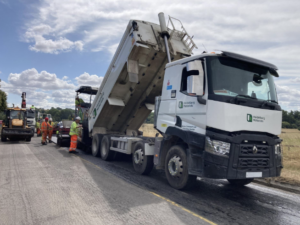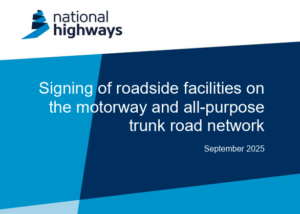Guidance from the Energy Savings Trust
During the summer of 2021, the UK Government published its Transport Decarbonisation Plan, which sets out how the UK’s transport sector can decarbonise and reduce emissions on the path to net zero.
The plan sets out a ‘place-based’ approach to transport decarbonisation, to ensure that our villages, towns, and cities are cleaner, greener, healthier, and more prosperous places to live and work. This approach focuses on the idea that local problems are best addressed by local organisations or communities than by national governments.
If we are to meet our 2050 net zero goal, something about the way we travel needs to change.
Why do we need to change the way we travel?
Transport is the single biggest contributor to carbon dioxide (CO2) emissions in the UK, making up 24% of all emissions in 2020, mostly from road transport.
While the number of electric vehicles (EVs) on UK roads continues to increase – up from 10,000 in 2010 to 450,000 as of March 2022 – unfortunately, overall emissions from transport are not showing signs of dropping.
At Energy Saving Trust, we are continually making efforts to promote the use of EVs and are working with the Department for Transport to bring in new measures that will help make our roads cleaner and the way we travel less polluting.
What’s in the Transport Decarbonisation Plan?
The Transport Decarbonisation Plan sets out the UK Government’s aim to decarbonise transport in the UK and the actions needed to decarbonise our roads and transport. It recognises that there is no single approach to decarbonising transport across the UK.
Solutions need to be local and respond to the needs of residents, to help them use less carbon intensive forms of transport. Across the country, each place will have its own role to play and its own suite of appropriate solutions to ensure we can achieve net zero by 2050.
How are we planning to help decarbonise transport?
To reach net zero, we need strong local leadership from local organisations, who are often best placed to make the right decisions and to deliver the appropriate practical changes for their area.
We have partnered with the Department for Transport to produce the local authority toolkit, helping local organisations identify and understand the actions they could take to decarbonise transport in England, and the impact they might have.
What is the local authority toolkit?
The local authority toolkit provides guidance on planning and delivering measures to reduce carbon emissions from transport in England that are appropriate to their local area and the needs of the local population. It highlights the benefits of a range of approaches, setting out the key actions for local authorities and identifying case studies of schemes that are already delivering benefits.
Currently, the toolkit covers nine different approaches that local authorities could implement, including active travel, car clubs, freight and deliveries, and demand responsive transport (a flexible service that provides shared transport to users who specify their desired location and time of pick-up and drop-off). It also contains specific guidance for rural authorities on how approaches are already being successfully implemented.
The toolkit sits alongside other transport decarbonisation support to help local authorities. This includes:
- The formation of Active Travel England (ATE). This is a government executive agency responsible for improving the standards of cycling and walking infrastructure in England.
- The publication of the EV infrastructure strategy. This strategy sets out a roadmap for the implementation of EV infrastructure across the UK.
- The launch of the Local EV Infrastructure (LEVI) fund, which we administer alongside our partners Cenex and PA Consulting. Supporting the rollout of EV charging infrastructure.
Later this year, the Department for Transport will publish updated Local Transport Plan (LTP) guidance for authorities in England, which will set out how quantifiable carbon reductions must be included in LTPs, making this a fundamental part of local transport planning and funding.
It will support local transport authorities to bring their LTPs in line with current government priorities, including decarbonisation, and help improve delivery of local transport services for transport users.






















